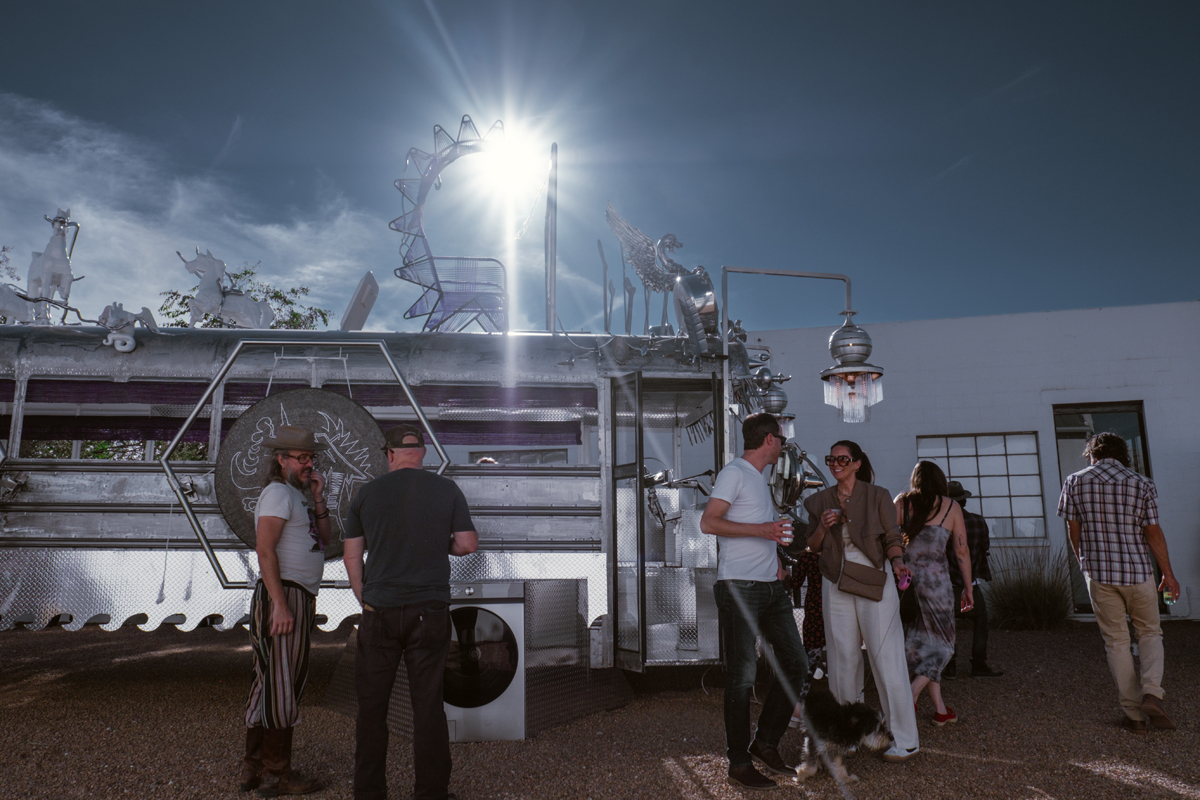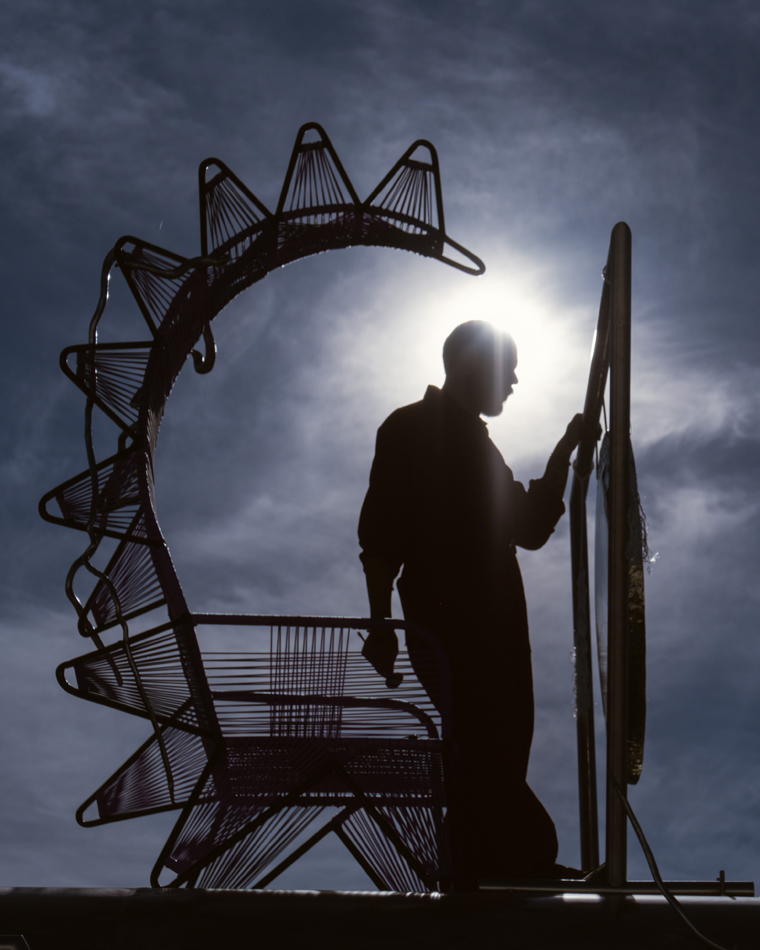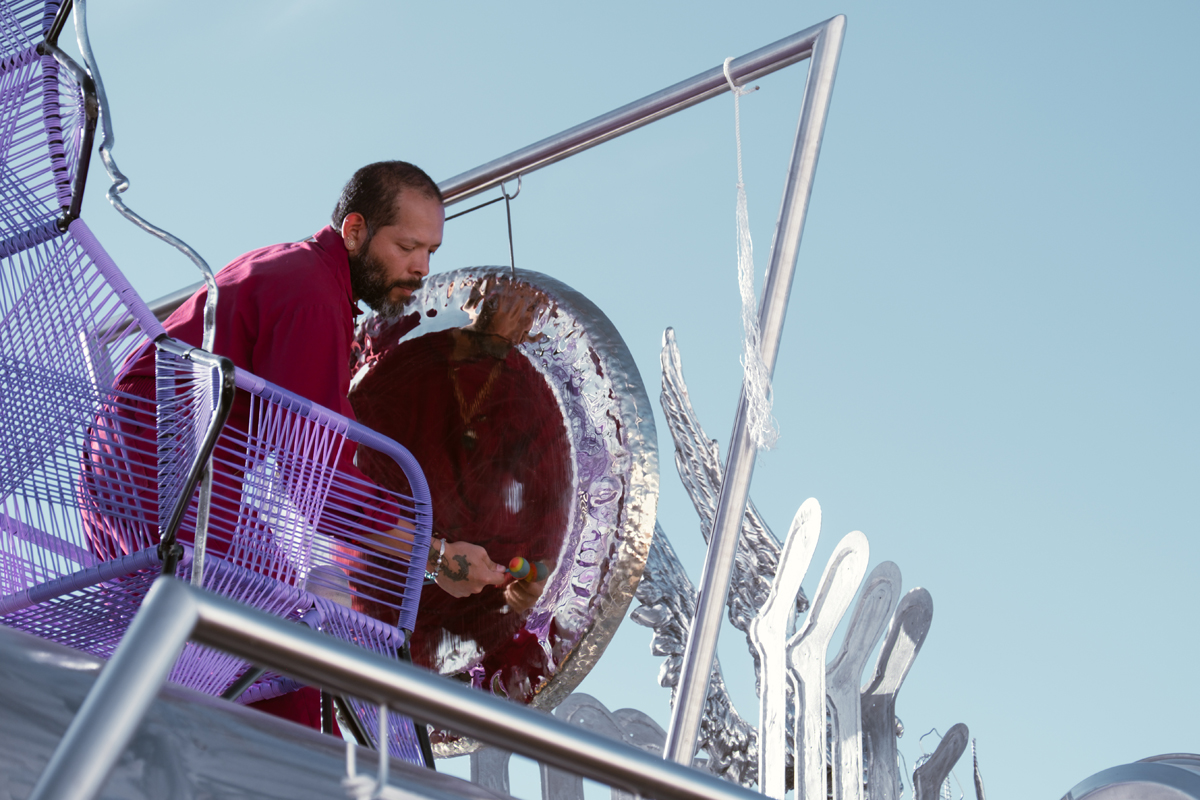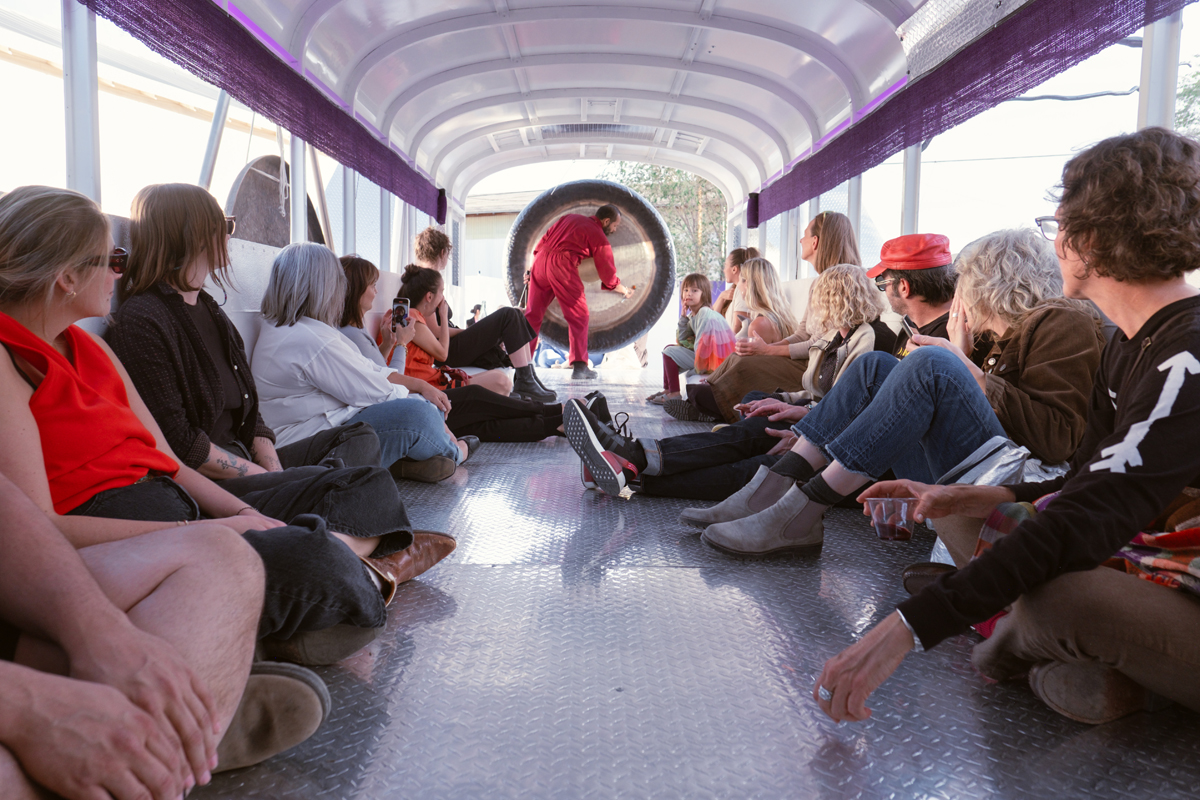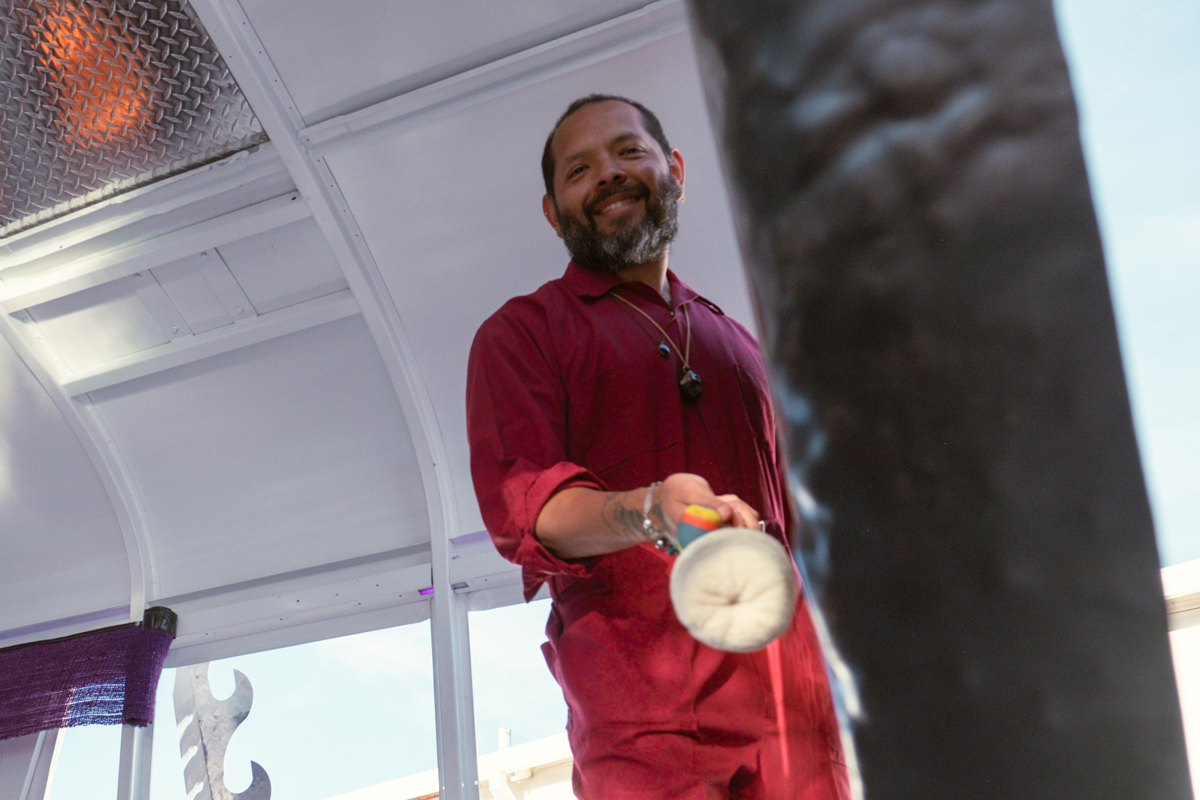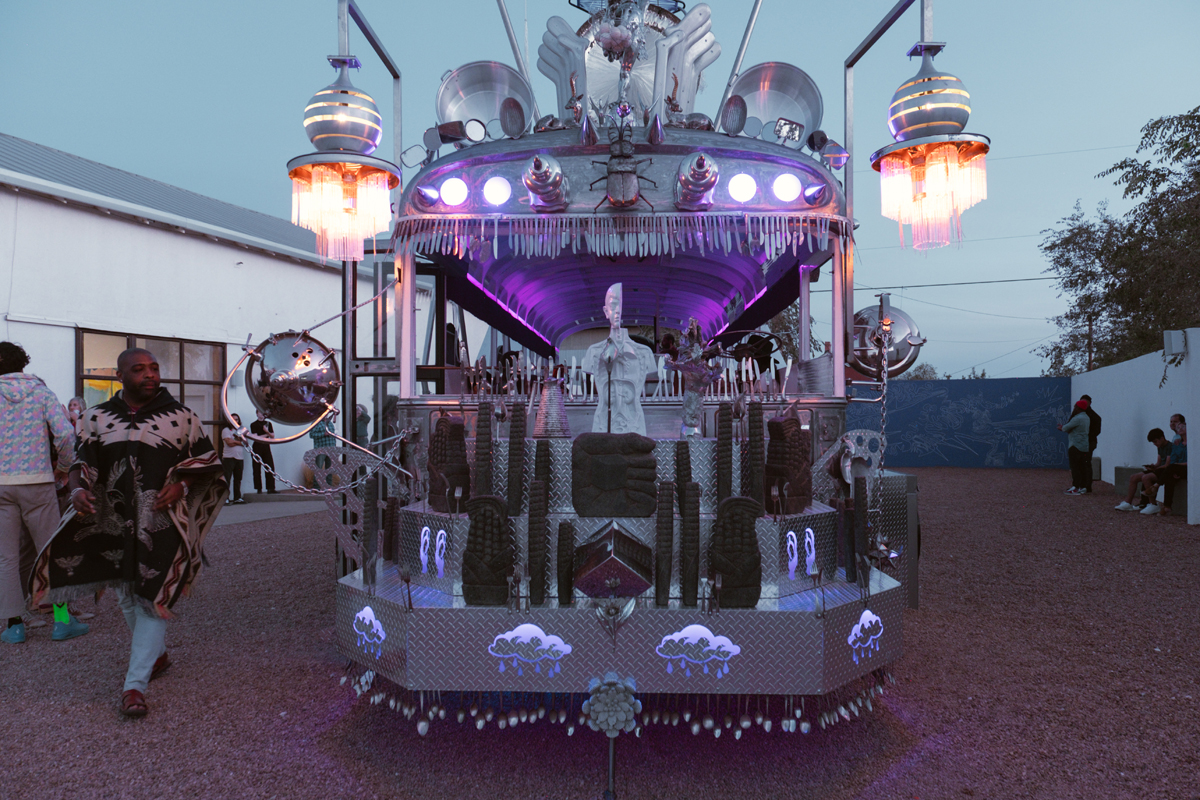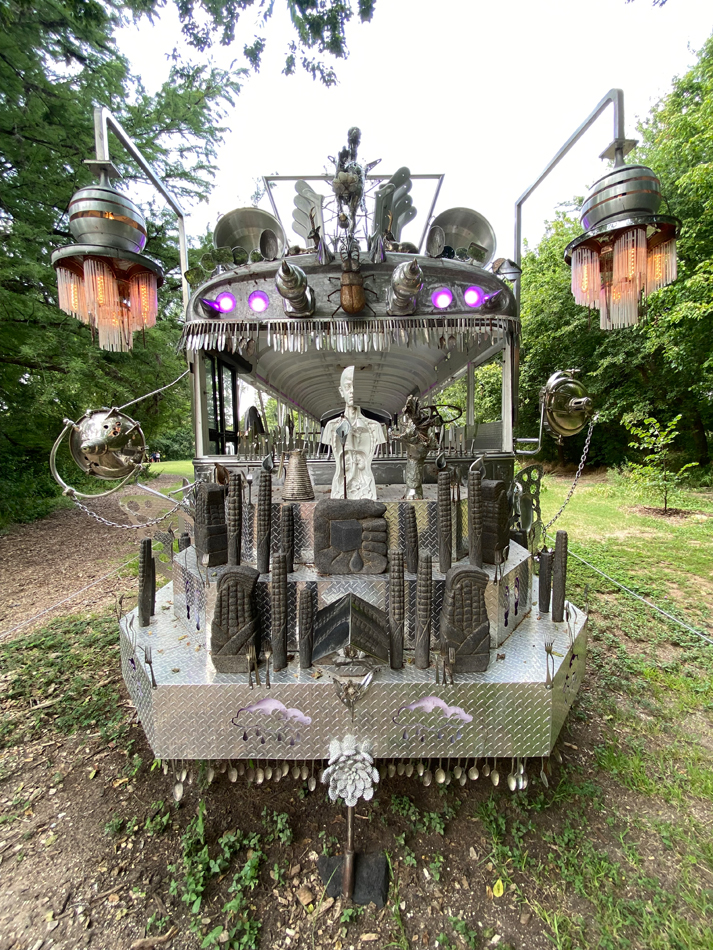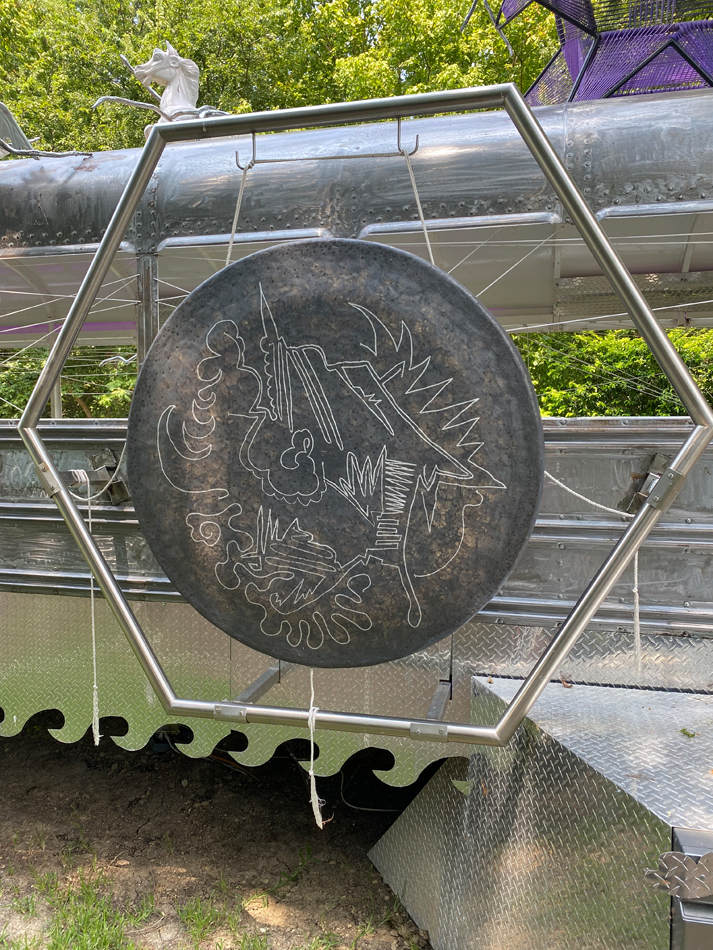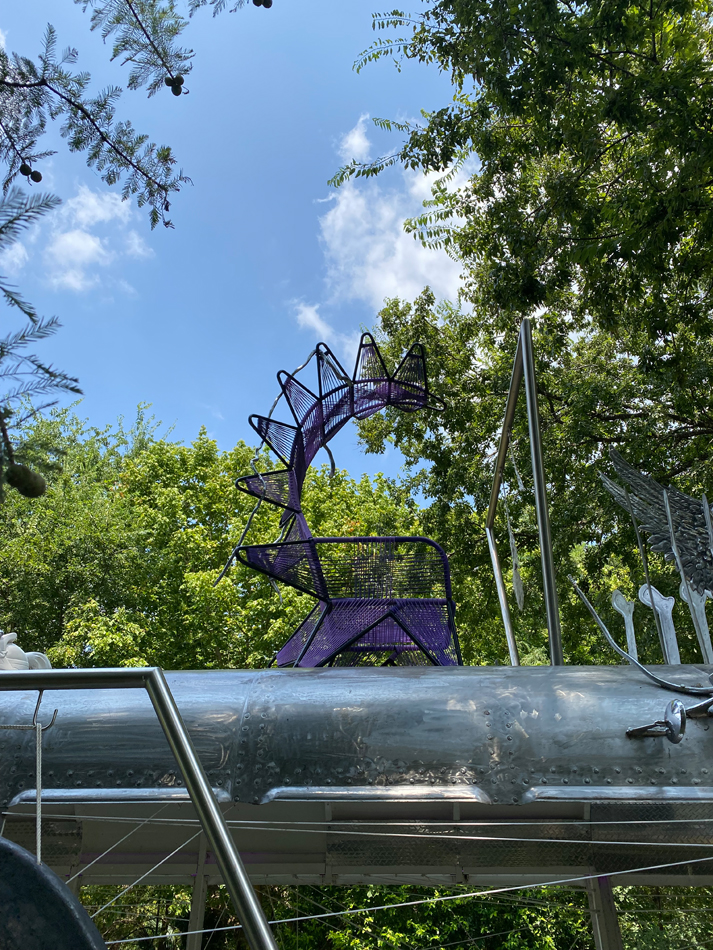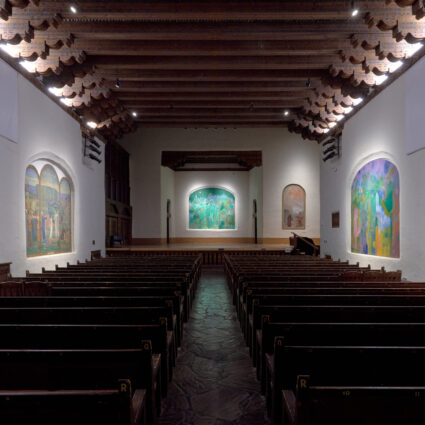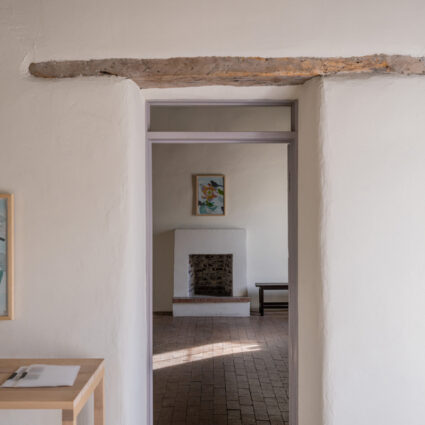Guadalupe Maravilla migrated from El Salvador to the U.S. as an unaccompanied eight-year-old. Now he’s on a more metaphysical migration route in his winged bus, Mariposa Relámpago.
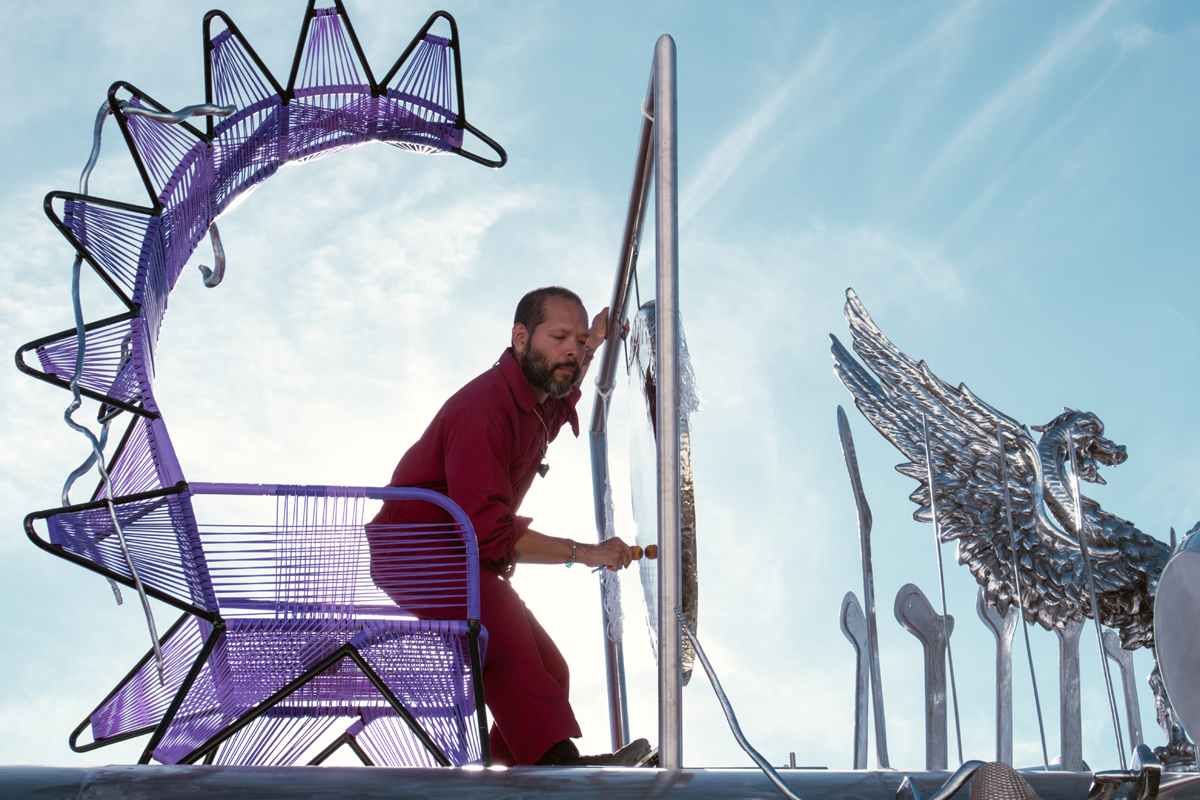
AUSTIN, TX—In recent months, a chrome autobús has taken up residence in the forested grounds of the Contemporary Austin at Laguna Gloria. The sonorous bellowing of gongs emanates from speakers at the base of the bus, and it is adorned with gigantic grasshopper legs, eating utensils, a throne, and various other modifications. Next, this shimmering vehicle will stop at the Blaffer Art Museum in Houston in spring of 2025.
Guadalupe Maravilla’s Mariposa Relámpago was once a school bus from a district somewhere within the United States. Thousands of decommissioned U.S. school buses have been repurposed as public transit buses in El Salvador, Maravilla’s birthplace. Maravilla’s family fled El Salvador when he was a child, escaping the turmoil of civil war.
The artist recalls traveling by bus in his youth, during the Salvadoran Civil War, passing through checkpoints guarded by armed men. In 1984—at eight years old—he migrated as an unaccompanied minor from El Salvador to California to New York. Mariposa Relámpago also began its journey in El Salvador, crossing the border into the U.S. like Maravilla. Now on its own multi-thousand-mile journey, the bus made its first stop in Boston in 2023, and is now on a Texas tour.
Maravilla activates the sculpture with sound, using Mariposa Relámpago as an energetic conduit.
Mariposa Relámpago (which translates to “Lightning Butterfly”) was the name of an ancient healer, someone Maravilla learned about in Oaxaca, Mexico. Like this healer, Maravilla intends for Mariposa Relámpago to ease trauma. On his own healing journey, Maravilla revisits the path that he took at age eight. He has collected many shiny, metal objects from El Salvador and Mexico, attaching them to the bus, along with objects carved from volcanic stone.
Maravilla believes in animism, a spiritual concept central to ancient cultures across the world. Animism is the belief that all things hold a spiritual essence or soul. No object, plant, or animal is disconnected; an animating force runs through everything. This energy bridges time and space: a carousel on the top of the bus provides a playground for the ancestors.
Maravilla activates the sculpture with sound, using Mariposa Relámpago as an energetic conduit. At every exhibition space that Mariposa Relámpago visits, participants climb aboard for sound therapy sessions, as gongs vibrate the sculpture around them.
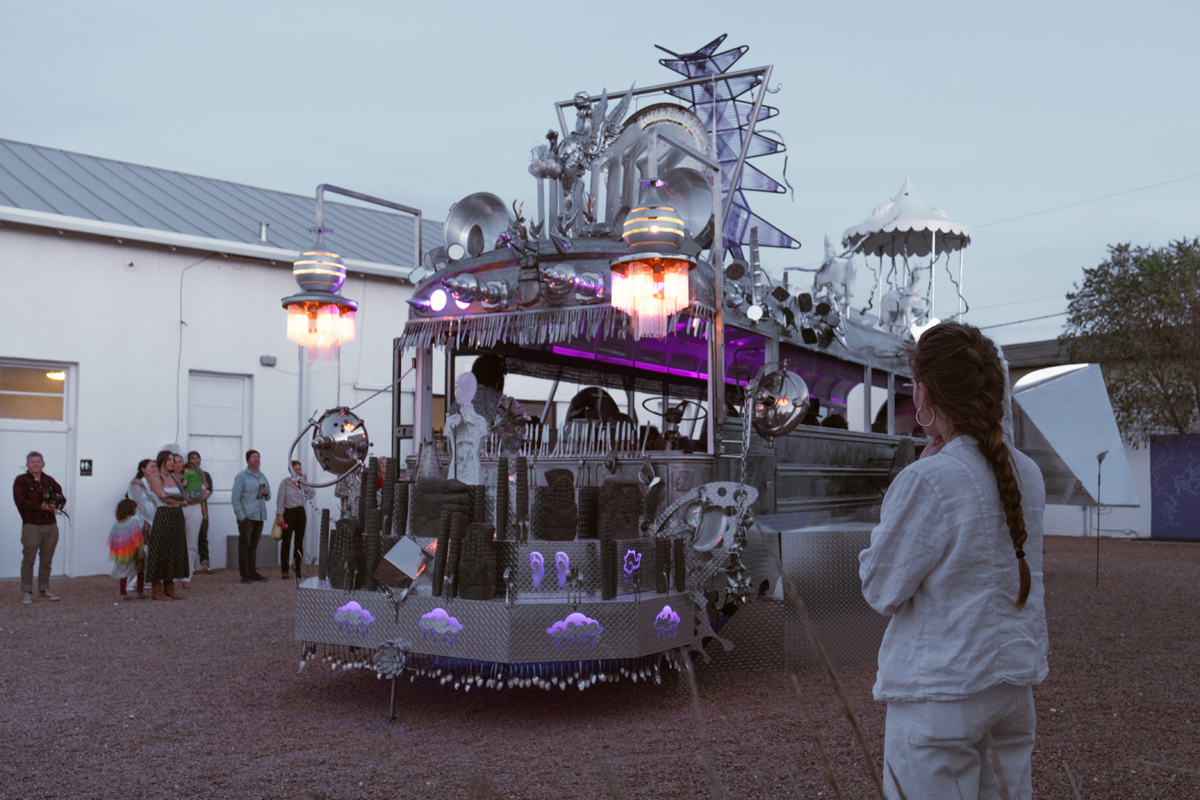
Like a hybrid deity, similar to the feathered serpent Quetzalcoatl of ancient Teotihuacán, Mariposa Relámpago jumps with grasshopper legs, flies with butterfly wings, and rolls on automated wheels. A pre-Columbian chimera collides with a chrome machine, communicating Latinxfuturist transcendence. A metallic purple throne atop the bus welcomes travelers on a wild ride, destination unknown.
With the butterfly wings that flank the front end of the bus, Maravilla draws a connection between healing and transformation. Healing does not look like rolling back the clock and undoing. Like the butterfly, we must undergo metamorphosis in order to heal.
Maravilla shares another commonality with the mariposa. Every fall the monarch butterfly migrates from the U.S. and Canada to winter in Mexico, and every spring it returns to its northern breeding grounds. The monarch is a migrant, a border crosser.
The border-crossing and nation-spanning path of Mariposa Relámpago is [politically] pointed.
The coming and going of the monarch is a near-universal occasion for celebration among humans that live along its route. The passage of Mariposa Relámpago has similarly spread delight in many corners of the monarch’s staggering range, but its human cargo also marks a striking contrast between how we treat human and animal migrants in the U.S.
Among right-wing politicians and pundits, “great replacement theory” rhetoric is on the rise. States like Texas are pressing forward with violent border policies, like putting razor wire on buoys in the Rio Grande, and expanding the presence of the Texas National Guard at the border. In the face of this violence, Maravilla’s Mariposa Relámpago and accompanying sound therapy sessions feel like a dose of sanity, healing, and celebration.
With that political context in mind, the border-crossing and nation-spanning path of Mariposa Relámpago is pointed. On its U.S. tour, the installation first stopped at ICA Watershed in Boston in 2023. Now it is charting a course across Texas, beginning near the border at Ballroom Marfa from fall 2023 to spring 2024. It arrived at the Contemporary Austin this April, where it is on view through November 3, 2024. The installation’s next stop is the Blaffer Art Museum in Houston in spring 2025.
